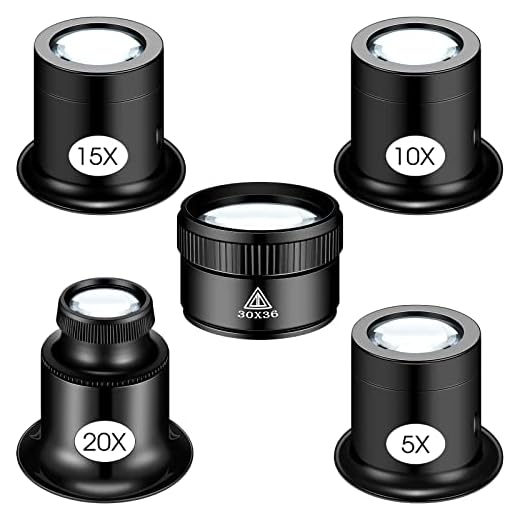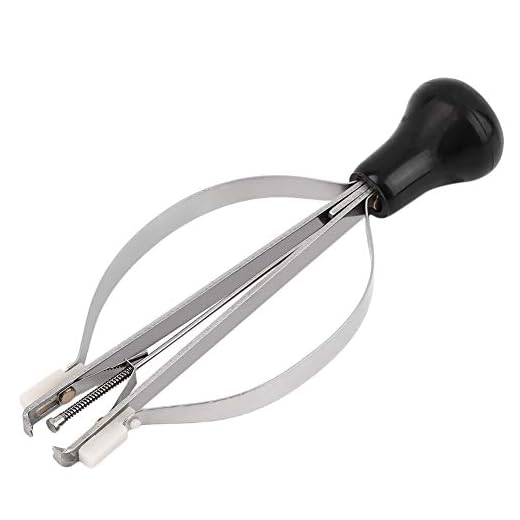Why a Ticking Watch Can Drive You Crazy (and How to Fix It Fast)
A loud tick usually signals a simple mechanical problem or a loose fit. This quick guide walks you through five practical steps to diagnose the noise and apply safe DIY fixes, so you can quiet your watch FAST and confidently.
What You'll Need
Upgrade a Noisy Wall Clock to a Silent Sweep Second Clock for $7 CAD
Diagnose the Sound: Identify Where the Tick Comes From
Is it the movement, the case, or your imagination? Learn to pinpoint the noise in one minute.Isolate the sound. Hold the watch close to your ear while it rests on a soft cloth to avoid echo, then bring it nearer and rotate it slowly. Use a paper tube, a stethoscope, or a jeweler’s loupe to focus the sound — these simple amplifiers pin down the source.
Listen for changes as you change position. Move the watch dial up, dial down, on its side, and note whether the tick gets louder, softer, or shifts location. Try tapping the case lightly to hear if a rattle moves.
Use this quick checklist to localize the noise:
Also check whether the watch keeps steady time. A loud tick coupled with an erratic rate often signals balance-wheel or movement problems that need professional attention.
Start by isolating the sound. Put the watch on a soft surface and move it close to your ear, then use a paper tube, stethoscope, or magnifier to localize the tick (caseback, crown, rotor, or hands). Note whether the tick changes with position (dial up vs. dial down) — position-sensitive noise often points to the balance wheel or rotor; rattles that shift when you tap the case suggest loose case parts, hands, or bracelet. Also check whether timekeeping is affected; a loud tick with erratic rate signals movement issues needing professional service.
Silence the Case: Tighten and Cushion Loose Parts
A rattle, not a monster: simple fixes calm down 50% of noisy watches.Remove the strap and inspect the caseback and lug screws. Use the correct-size driver and turn gently — avoid stripping screws. Sight the caseback seam; a raised edge or gap shows misalignment.
Replace a worn spacer ring with a thin felt or foam pad; a new movement cushion often absorbs annoying rattles. For example, a slim self-adhesive foam ring behind a vintage dial can stop a persistent caseback buzz in minutes.
Many loud ticks come from loose caseback screws, a misaligned caseback, or a free rotor/weight. Remove the strap and carefully inspect the caseback and lug screws; tighten gently with the correct driver to avoid stripping. Check that the movement holder and spacer ring (movement cushion) are present and undamaged — replacing or adding a thin foam or felt movement cushion can absorb rattles. For automatic watches, gently spin the rotor to feel for excessive play; some rotor play is normal, but excessive knocking hints at a loose screw or rotor bearing that may need a watchmaker. Always avoid overtightening and keep parts clean to preserve seals and water resistance.
Clean the Culprit: Remove Dust, Dirt and Lint
Dirt is louder than you think — a quick blow can feel like a miracle fix.Open the case only if you’re comfortable and have the right case-opener tool and a clean, well-lit workspace.
Use a hand blower or gentle canned air to dislodge dust and lint that can catch on the balance staff, pallet fork, or hands.
Employ a soft brush (camel-hair) or pegwood to coax away visible particles; use cotton swabs to clear crown tubes and case recesses.
Never pour liquid cleaners or solvents directly onto the movement — oils and chemicals require professional technique and can ruin pivots and jewels.
Remove hands carefully with proper hand levers if debris sits under them, then reposition the hands; trapped particles between hands and the dial or crystal often produce repetitive ticks.
Reassemble the watch and retest it in several positions (dial up, dial down, crown left/right) to confirm the noise is gone.
Minor Movement Adjustments: Hands, Crown, and Balance Tweaks
Tiny tweaks, big peace — a small shift can stop a maddening tick.Pull the crown to the time-setting position and inspect the hands for contact. If the second or minute hand brushes the dial or crystal (common at 12 o’clock), use proper hand pullers to remove and hand pushers to reseat them so they clear the dial and each other.
Inspect hand alignment visually under a loupe; adjust the cannon pinion position gently if the minute hand drags the hour hand. Use pegwood or Rodico to remove any grime under the hands before reseating.
Check the crown and stem play by gently wiggling the crown and winding slowly. If the crown clicks or rattles, suspect a worn stem tube or loose crown that transmits loud winding noise.
Examine the balance area for obvious issues: look for hairspring entanglement or a displaced regulator coil. Avoid touching or bending the balance — delicate parts are easily ruined.
Lightly lubricate the winding stem or crown tube with a tiny smear of crown/stem grease only; use minimal amounts and the correct watchmaker’s lubricants.
When to Stop and Seek a Pro: Signs You Need Watchmaker Help
If in doubt, don't DIY — watchmakers can save you time and money (and your watch).Stop and pause if the tick persists after tightening, cleaning, and minor adjustments, or if you notice erratic timekeeping, moisture under the crystal, visible broken parts, grinding noises, or problems with complex complications (chronographs, calendars). Avoid continuing DIY work — you can increase damage and void warranties.
Document your findings before you go in for service.
Request specific work from the watchmaker.
Store the watch face-up in a padded box while you arrange service to minimize noise and wear.
Quick Wrap-Up: Quiet Watch, Happy Wrist
Most loud ticks can be fixed by careful diagnosis, tightening and cushioning loose parts, cleaning and movement adjustments; if uncertainty or accuracy problems persist, stop and consult a professional to avoid costly damage — is your watch ready for quiet wear?







Good, practical guide. One question: if the ticking clearly comes from the balance wheel/hairspring area, is that something you should try to clean yourself (step 3) or is that an immediate ‘stop and seek a pro’ (step 5)? I worry about disturbing lubrication or bending the hairspring.
Good additions. The guide’s step 5 exists for a reason: balance and hairspring work are delicate. Minor cleaning is okay, major adjustments or lubrication changes should be done by a pro.
If the noise is from the balance/hairspring area, be very cautious. You can try gentle dust removal with a rubber blower and a soft brush from a distance, but avoid touching the hairspring or using solvents. If you suspect lubrication issues or visible damage, that’s a pro job.
I once thought I could ‘clean’ a balance wheel — ended up bending the hairspring. $200 later, lesson learned: hands off unless you have the tools and steady hands.
Use a hand blower (rubber bulb) and a loupe to inspect first. Never use canned air — it can freeze and fling dust deeper. If you can’t see what’s wrong with magnification, take it to a watchmaker.
Tried the cotton-under-strap hack and now it sounds like a tiny drum kit inside my watch 😂. Followed the crown tweak in step 4 and that helped way more than stuffing things in. Good quick read — short, to the point.
Also, is there a quick way to tell if my watch is quartz or mechanical before I start poking around?
Exactly — listen to the second hand. One-second jumps = quartz. Sweep = mechanical/automatic. If it’s quartz, low-battery chirps can make weird noises too; consider battery replacement before opening anything else.
If the second hand ticks once per second, it’s quartz. If it sweeps more smoothly, it’s mechanical. Also quartz watches often have a battery hatch or need a battery change every couple years.
Nice walkthrough but a few suggestions from someone who’s done a couple of DIY fixes:
1) Add photos or short video clips for each step — especially for opening the caseback and identifying the common loose parts.
2) Include a simple tools list (case opener, loupe, rubber blower, micro-screwdrivers, pegwood).
3) A clear warning about water resistance and seals would be great — a lot of people forget the gasket and ruin the watch.
If you add that, this becomes a 10/10 quick fix guide.
Also add magnification recommendations — 5x loupe is a game changer for spotting lint and tiny loose screws.
Agreed. Loupe 4–10x is handy depending on the task. We’ll mention that and link to examples of basic, inexpensive watch tool kits in the update.
Great feedback, Priya — we’ll add a tools checklist and some annotated photos in the next update. And yes, we’ll emphasize gasket checks and when to preserve water resistance by going to a pro.
One more: show how to store tiny screws safely (magnetic tray or egg carton). I lost a screw and had heart palpitations for a week 😅
Love the real-world tips — we’ll include screw trays and a tip about photographing the movement before disassembly to help with reassembly.
A few practical tips that might help others:
– Use a rubber blower (pegwood is great too) to remove dust rather than touching anything with fingers. Oils from fingers = bad news.
– When adjusting the crown/hands, do tiny nudges and test after each move. Don’t force anything.
– If you remove the caseback, keep the watch face-down on a microfiber cloth so dust doesn’t fall into the movement.
– Never use solvents unless you know what you’re doing — lubrication is precise and wrong oils/gunk will make things worse.
Also: if the watch is loud only when moved, that can point to rotor/hanger issues in automatics — that’s usually a pro-level fix.
Yep — finger cots, lint-free gloves, and keeping a clean workspace go a long way. If anyone wants, I can add a short checklist of ’do not do’ items to the guide.
Agree on the microfiber cloth — saved me from introducing dust. Also, watchmaker gloves or finger cots are cheap and worth it.
Fantastic practical list, Olivia — we’ll fold most of this into the cleaning and movement-adjust sections. The rotor comment is especially useful for automatics.
Thanks for the rotor tip — I had a noisy automatic and it turned out to be a loose rotor weight. Took it to a pro but wish I knew that earlier.
This guide actually saved my sanity.
Step 1 helped me pinpoint the noise — it was a tiny rattle from a loose spacer under the movement. I tightened the case screws like the guide said and wedged a thin piece of felt between the movement and case (super-thin, not sticky).
After that the ticking is basically gone — I can finally sleep next to my partner again 😂
Couple tips: watch out for waterproof gaskets when opening the caseback and don’t over-tighten screws. Also, if you have a delicate lug strap, loosen it before you fiddle with the case.
So glad it worked for you, Emma — thanks for the detailed walkthrough! Quick tip: use a movement holder while you work and avoid glue/adhesives (they gum up movements). If the watch has a screw-down caseback, be gentle with the torque on those screws.
Nice find! Which felt did you use? I tried a piece of craft felt and it seemed a bit thick — ended up reducing the cushion. Any brand/weight recommendations?
Mark — look for very thin watchmaker felt or 0.3–0.5 mm craft felt. You want just enough to damp vibration, not to push the movement out of place. If unsure, cut tiny strips and test incrementally.